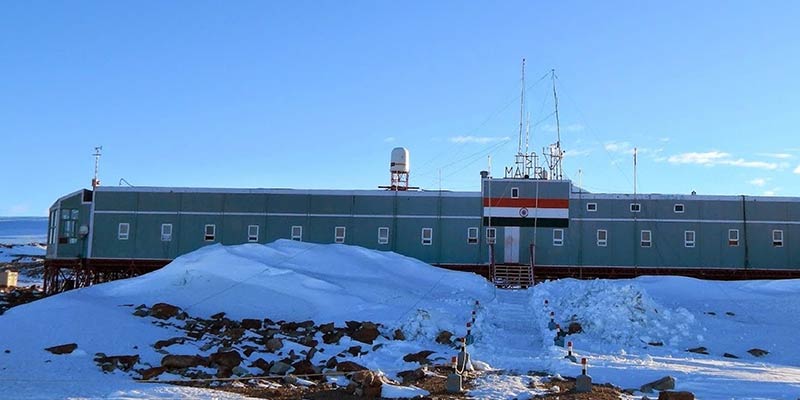- India
- May 03
Explainer - Antarctic Treaty
• India will host the 46th Antarctic Treaty Consultative Meeting (ATCM), the highest forum for governing the icy continent, at Kochi from May 20-30.
• The meeting will be hosted by the National Centre for Polar and Ocean Research (NCPOR), an autonomous institution under the ministry of earth sciences.
• The 26th meeting of the Committee for Environmental Protection (CEP) will also be held along with it.
• New Delhi had last hosted the ATCM and CEP meeting in 2007, when it had approved the construction of Bharti, India’s third research station in Antarctica.
What is the Antarctic Treaty?
• The Antarctic Treaty was signed in Washington on December 1, 1959 by the 12 countries whose scientists had been active in and around Antarctica during the International Geophysical Year (IGY) of 1957-58.
• It entered into force in 1961 and has since been acceded to by many other nations. The total number of Parties to the Treaty is now 56.
• These nations represent a diverse array of countries from all over the world, highlighting the global commitment to upholding the principles outlined in this historic agreement.
• They are entitled to participate in the Consultative Meetings during such times as they demonstrate their interest in Antarctica by “conducting substantial research activity there” .
• The Antarctic Treaty consists of 14 articles that establish a framework for the governance of Antarctica.
• The Antarctic Treaty provides that “Antarctica shall be used for peaceful purposes only”. To this end it prohibits “any measures of a military nature” but does “not prevent the use of military personnel or equipment for scientific research or for any other peaceful purpose”.
• The Secretariat of the Antarctic Treaty is located in downtown Buenos Aires, Argentina. The Secretariat and its work are funded by the Consultative Parties.
• The Protocol on Environmental Protection to the Antarctic Treaty was signed in Madrid in 1991 and entered into force in 1998.
• It designates Antarctica as a “natural reserve, devoted to peace and science”. Until 2048, the Protocol can only be modified by unanimous agreement of all Consultative Parties to the Antarctic Treaty.
India and the Antarctic Treaty
• India signed the Antarctic Treaty on August 19, 1983, and soon thereafter received Consultative Status on September 12, 1983.
• The country is one of the 29 Consultative Parties to the Antarctic Treaty. It is also a member of the Council of Managers of the National Antarctic Programme and the Scientific Committee of Antarctica Research.
• Through open dialogue, collaboration, and consensus-building, India remains committed to upholding the principles of the Antarctic Treaty and contributing to the sustainable management of one of Earth's last pristine wilderness areas.
• India has two active research stations: Maitri (commissioned in 1989) at Schirmacher Hills, and Bharati (commissioned in 2012) at Larsemann Hills in Antarctica. The country has successfully launched 40 annual scientific expeditions to Antarctica to date.
Antarctic Treaty Consultative Meeting (ATCM)
• Every year, the original 12 Parties to the Antarctic Treaty, along with other Parties demonstrating their commitment to Antarctica through substantial research activity, come together for the Antarctic Treaty Consultative Meeting (ATCM).
• This gathering serves as a platform for exchanging information, consulting on matters of mutual interest related to Antarctica, developing, and recommending measures to their respective governments in alignment with the principles and objectives of the Antarctic Treaty.
The meeting brings together representatives from various groups, including:
i) The Consultative Parties
ii) The Non-Consultative Parties
iii) Observers, such as the Scientific Committee on Antarctic Research (SCAR), the Commission for the Conservation of Antarctic Marine Living Resources (CCAMLR), and the Council of Managers of National Antarctic Programs (COMNAP).
iv) Invited Experts, including the Antarctic and Southern Ocean Coalition (ASOC) and the International Association of Antarctica Tour Operators (IAATO).
• During the ATCM, consensus is reached on measures, decisions and resolutions. These instruments serve to implement the principles of the Antarctic Treaty and the Environment Protocol, providing regulations and guidelines for the management of the Antarctic Treaty area and the work of the ATCM.
• From 1961 to 1994, the ATCM took place biennially. But since 1994, it has become an annual event. The hosting of the ATCM rotates among the Consultative Parties based on the alphabetical order.
• These meetings, held every year under the Antarctic Treaty System, serve as forums for Antarctic treaty consultative parties and other stakeholders to address the pressing environmental, scientific and governance issues in the icy continent.
The key items on the 46th ATCM’s agenda include:
i) Strategic planning for sustainable management of Antarctica and its resources.
ii) Policy, legal and institutional operations.
iii) Biodiversity prospecting.
iv) Inspections and exchange of information and data.
v) Research, collaboration, capacity building and cooperation.
vi) Addressing climate change impacts.
vii) Development of tourism framework.
viii) Promoting awareness.
Manorama Yearbook app is now available on Google Play Store and iOS App Store


